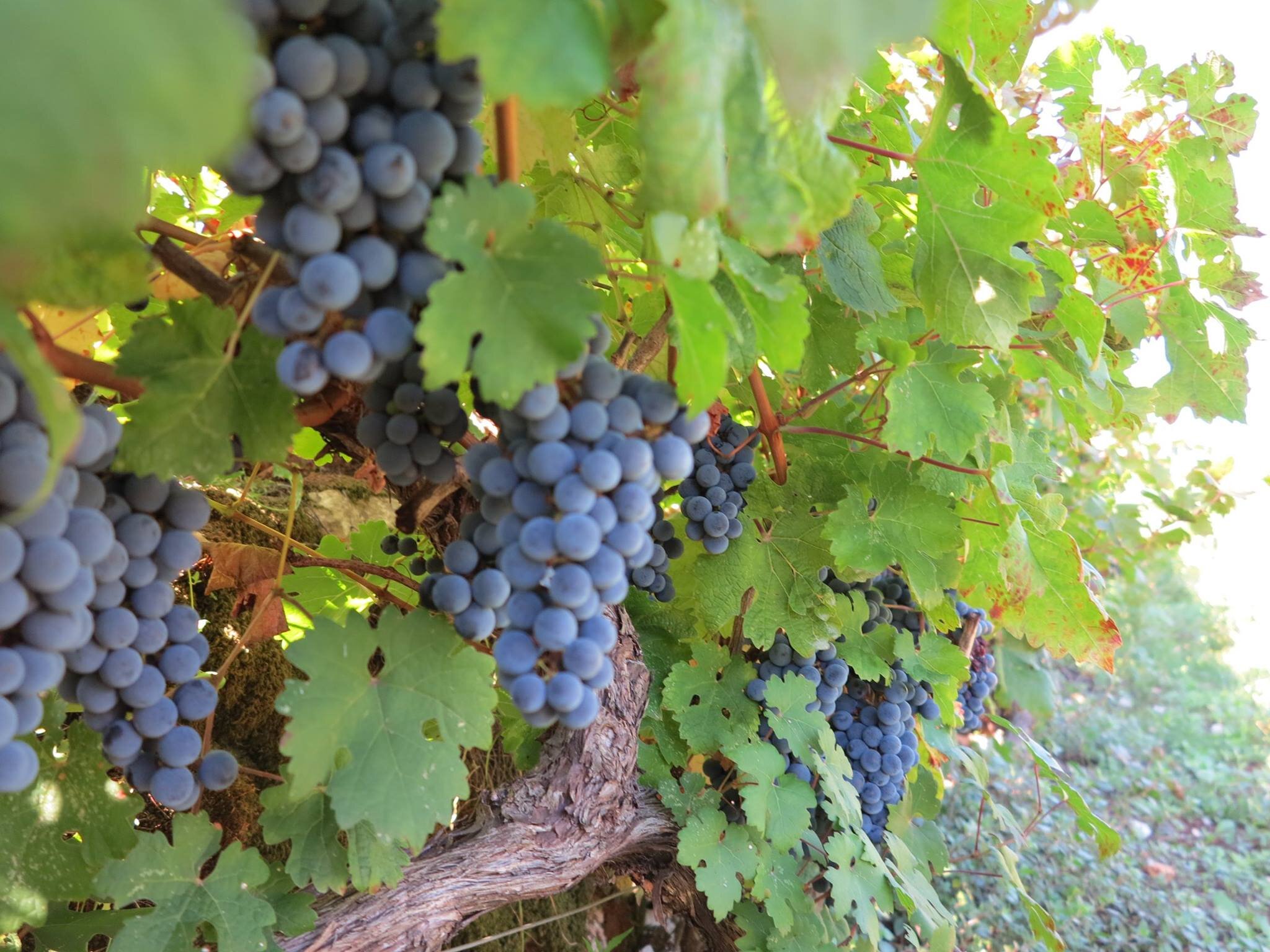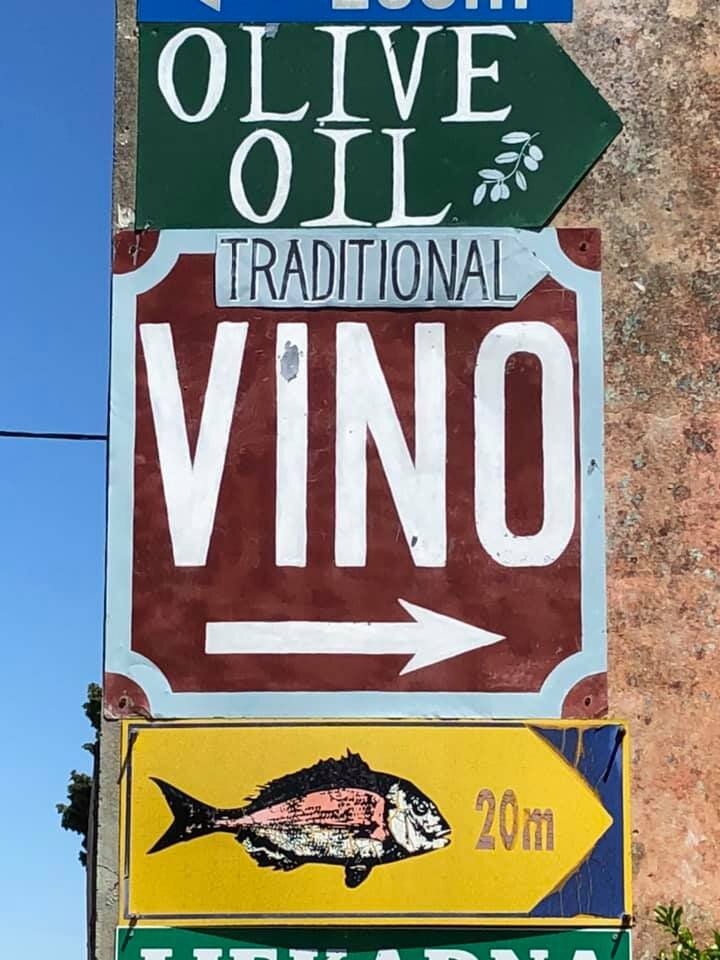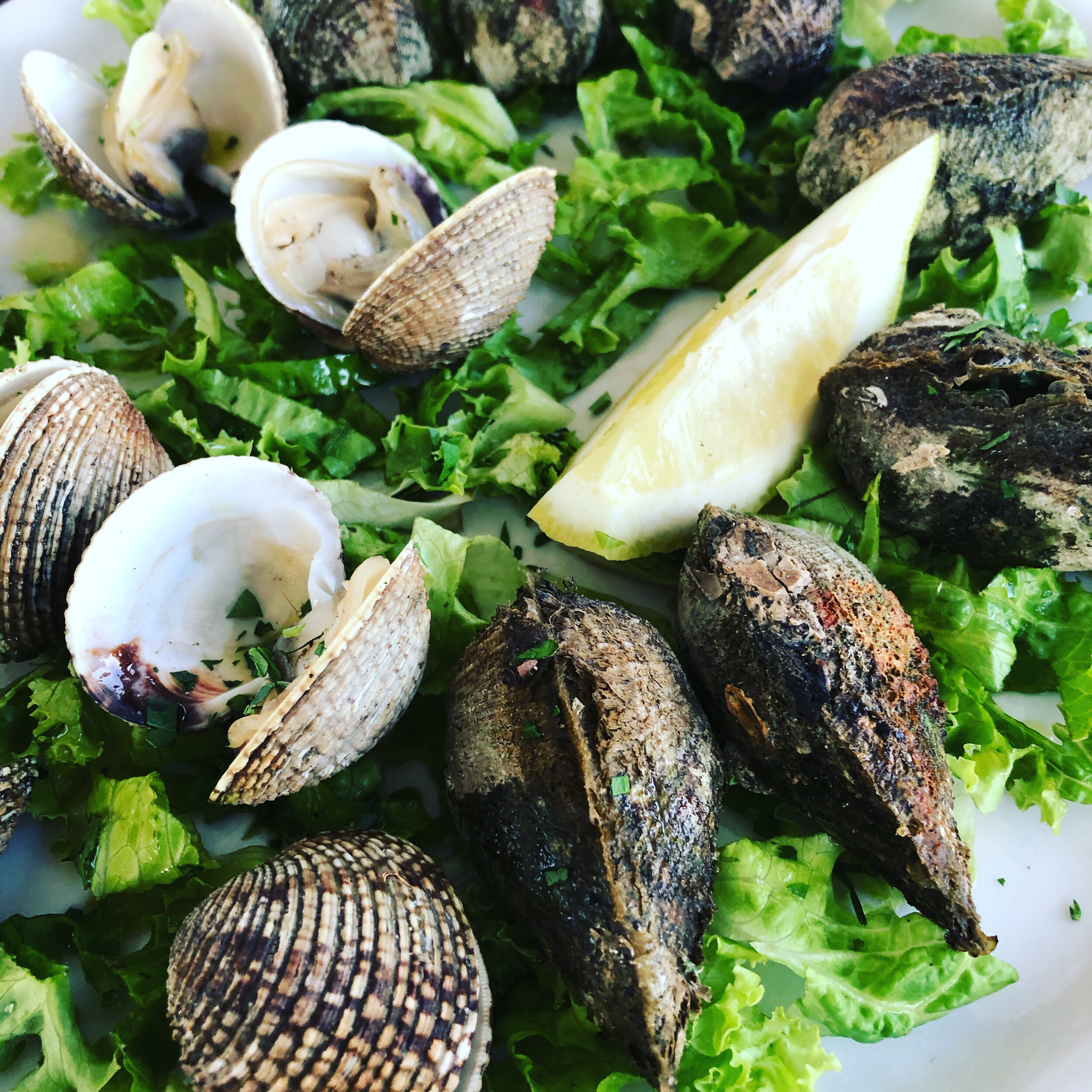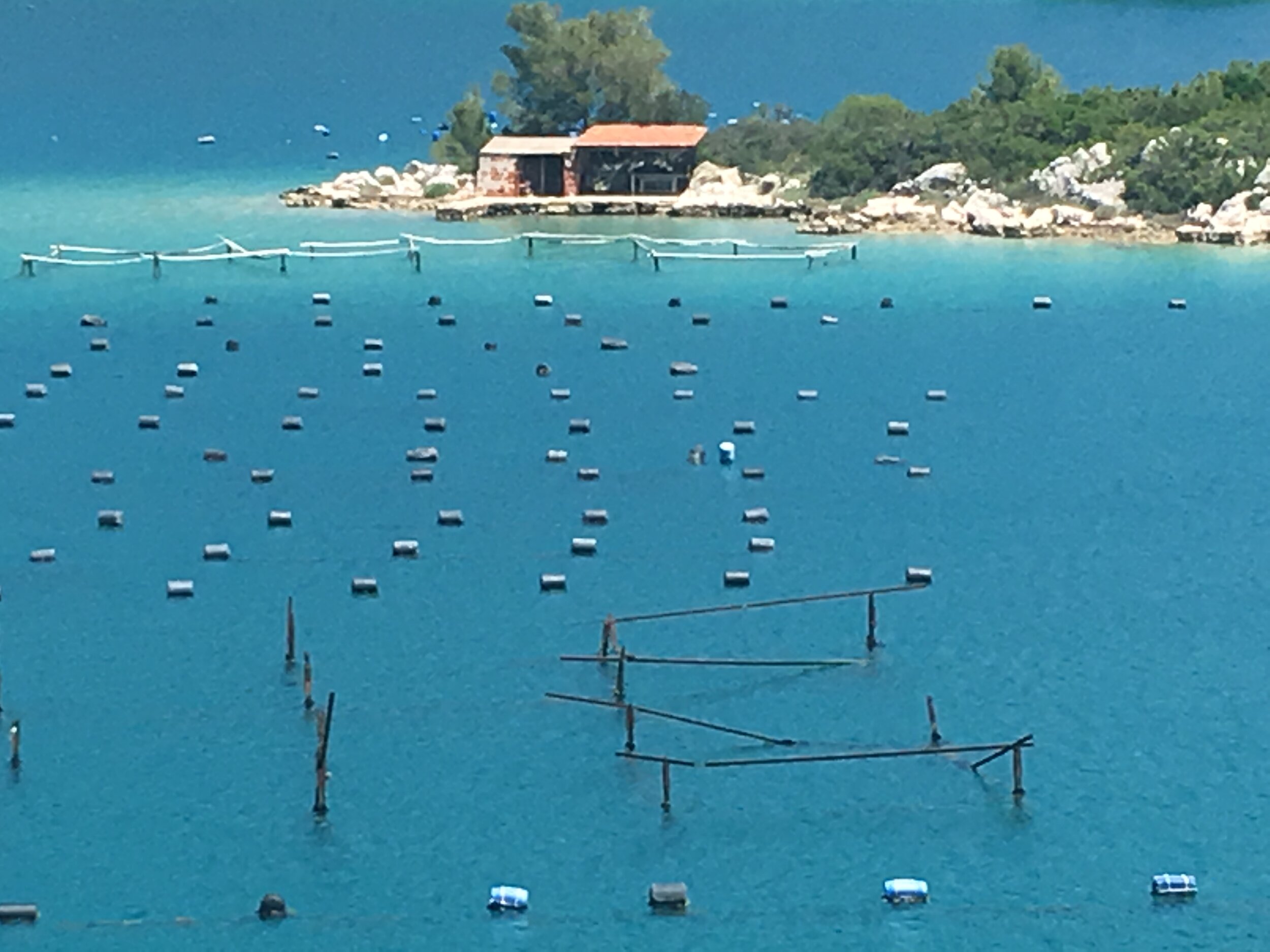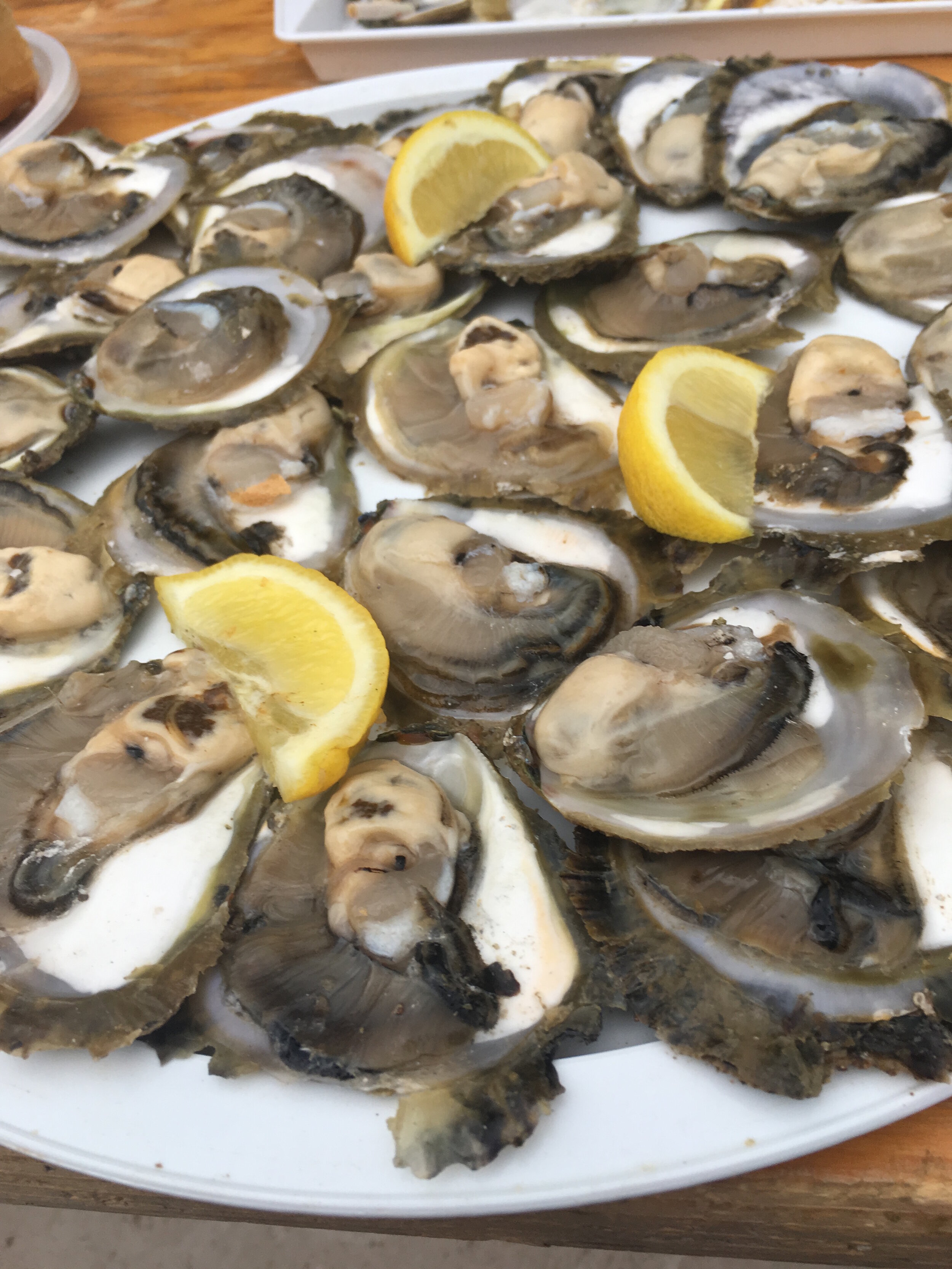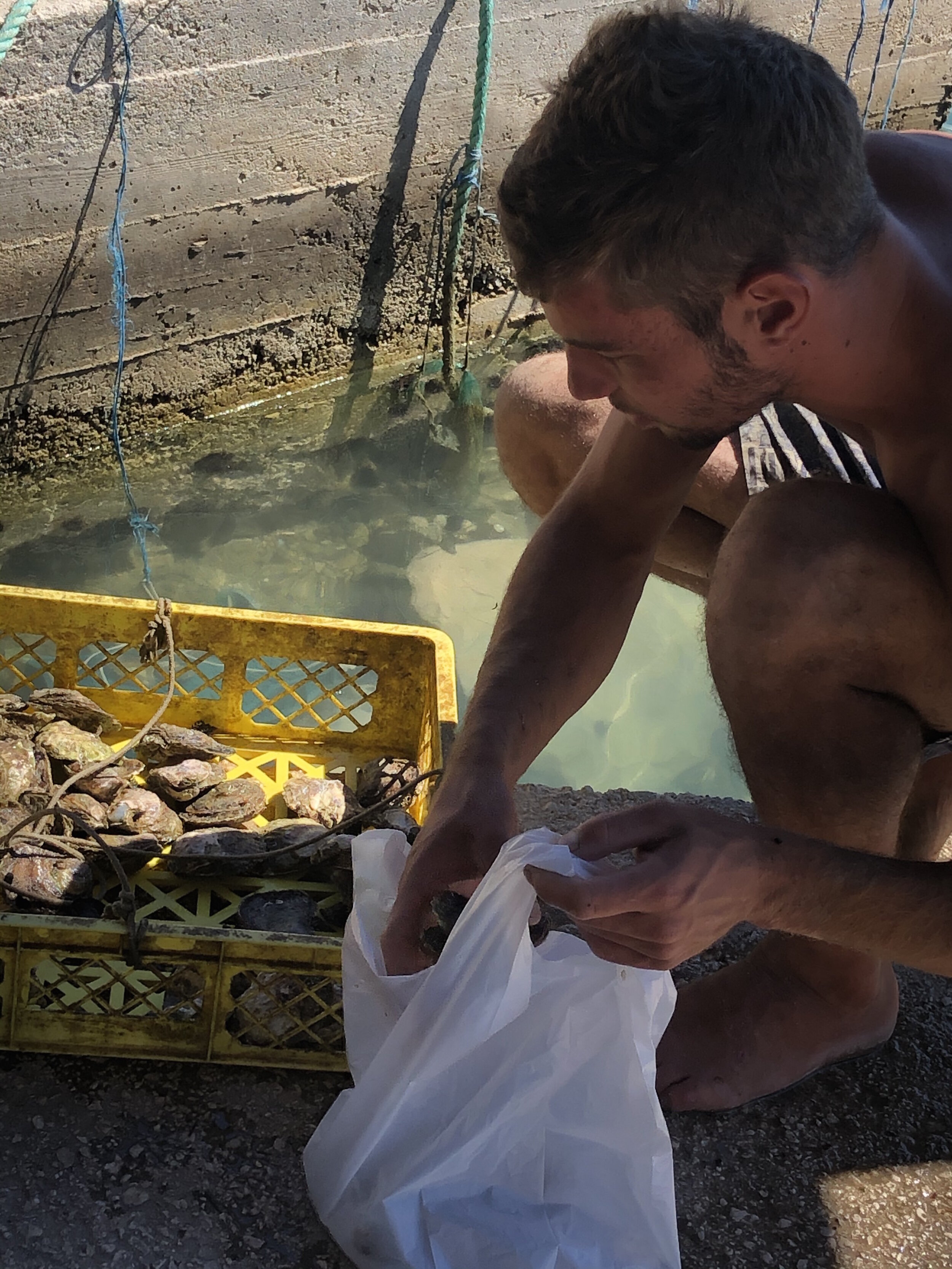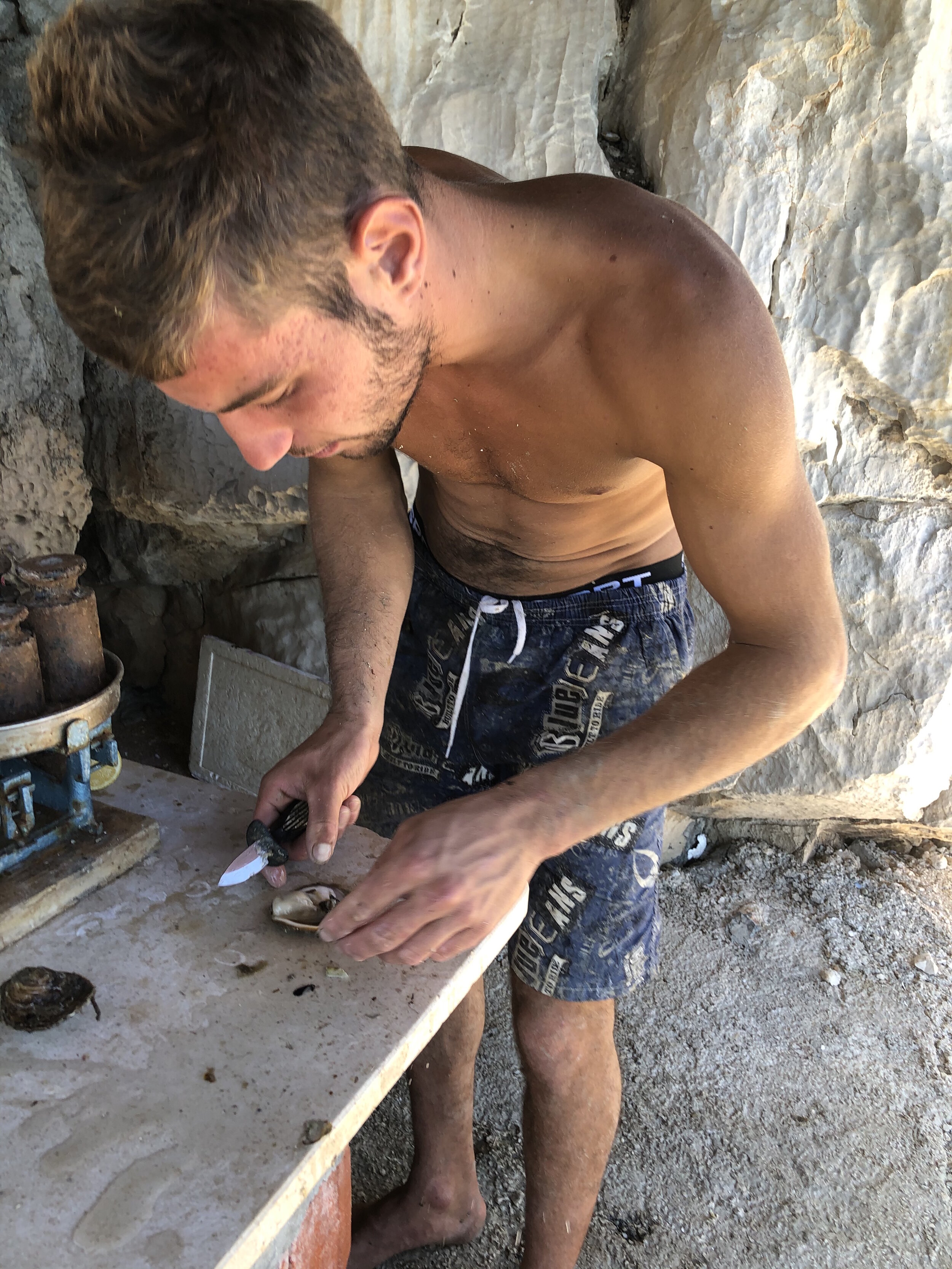One of southern Dalmatia’s most remarkable regions, the Pelješac peninsula has been a bit of a silent star when it comes to Croatian tourism; but has never been short on love and devotion from the local population. Now and throughout history this one road strip of wild and rustic charm has long been cherished for its beauty and abundant natural resources.
Pelješac has that unpolished, truth and simplicity of rural life - something that is becoming harder to find in Dalmatia as everything gets dressed up for tourists. I’ve been floating around Dalmatia long enough to have a nostalgic sense for certain things. Call it old world charm - once you get a taste for this spot, you will wish you had more time.
Dubrovnik’s go to for region for gastronomic and wine tours, a majority of visitors experience the Cole’s notes tour of peninsula highlights, but try a few days, or a week. Bring a set of wheels, whether car, motorbike, or bicycle and put on your exploring cap for a superb road trip experience.
The region is likely though, to be on the brink of a bit of change. When the peninsula gets a new link to the mainland via the much fabled, heavily debated Pelješac bridge construction. The result will be an alternative route along the southern coast of Dalmatia that connects the two hotspot destinations of Split and Dubrovnik. Circumventing the current route that requires two border crossings thru the thin corridor of seaside belonging to Bosnia and Hercegovinia; it will surely for many become the preferred way to go - if not for the convenience but for the scenic beauty of the drive.
The last time a monumental construction effort happened on Pelješac was most surely in the 14th century when the Ragusan Republic erected the fortification walls that run up from Ston and Mali Ston - the longest defensive walls in Europe stretching to almost 6kms, and second to the Great Wall of China, giving them the moniker the Great Wall of Croatia/European wall of China…We will return to their significance shortly.
I personally hope for as little affecting change as possible for the peninsula, and for what inevitable changes that do occur - that there is some mindfulness about what the Pelješac peninsula has always had all along, without trying too hard.
Like a long arm lazily flung out from the coast, the peninsula is quite narrow, but densely packed with rugged mountains, wild nature, emerald green coves, pebbled beaches, and some of the finest gastronomic gifts from nature to be found in Croatia. One road runs like a spine along the centre of the peninsula, with small side roads that branch off and swing down steep turns to small villages tucked into bays; places where time seems to have stopped long ago. With a history of depopulation, vast parts of the peninsula remain uninhabited, and untouched. Wild jackal like dogs howl and yip at night, and wild boars roam the ancient pine forests.
There are proud traditions here that run deep here; expressed best by the domestic specialties Pelješac has become famous for. Special things that are intrinsically tied to the terrain, made from nature, that can also be seen as an ode to a long history of good taste!
Welcome to the wild land of wine, seafood, and salt.
Only an hour’s drive from Dubrovnik, at the point where the peninsula is attached to the mainland, the small towns of Ston and Mali Ston, connected by monumental defendive walls are literally and historically the gateway to all the naturally produced magic that lies from there and beyond.
SALT OF THE EARTH
WORTH ITS WEIGHT IN GOLD…
When salt held the currency value of gold, the Ragusa Republic (Dubrovnik), did well for itself, using the natural resources that had been harnessed here for centuries before them. Salt was one of the most lucrative goods to trade, which they did up and down the Adriatic as well as with the Ottoman Empire. This brought great wealth to the Republic, and like Dubrovnik, with that also came the threat of invasion - and up went the defensive walls that you see climbing the rocky hills from the towns, creating a ribbon of protection for the salt pans that are still operating today using the same traditional methods.
Salt production in the shallow fields that filled with sea water has been taking place here for at least 4000 years - the Ragusans picked up the tools left by the Romans. Before the Romans were the Greeks and the Illyrians that chose this spot, if not for the salt, it was for the treasures found in the sea.
The lay of the land, and the sea for that matter has also provided the perfect conditions for nature to do its magic work. Magic in the way of the Mollusc.
Mussels, oysters, and other delicious shellfish sorts thrive in the salty waters of the bays on this part of the Adriatic Sea that are a happy home for the shellfish. Freshwater dumped into the bays via the Neratva River and underground streams literally feed the sea life with nutrients, and thus this became home for the famous oysters of Malostonski bay that people have coveted, and made a pilgrimage to the region, for centuries.
Roman emporers, (as one does as a Roman emporer), had them transported in special chests, delivered to where they waited. And later, the Hapsburgs developed a taste for Ston oysters, and also had them delivered on demand for their banquet feasts.
I was told by one restaurant owner that during the 90’s conflict, that special ‘missions’ were made to Ston, amidst all what was happening, to get some of the shellfish.
How far you want to immerse yourself in the world of oysters while exploring Pelješac is up to you - take your pick from a variety of options. A quick slurp at a roadside stop, to a luxurious lunch in the bay; or for the real deal, take a trip with one of the oyster harvesting families to the shell beds. From the boat you will harvest, and enjoy mussels straight from the sea to your mouth.
*see below for my rec’s for tour operators, and restaurants etc.
So, we have just begun exploring the peninsula and we have already touched on two of the great finds - salt, and shellfish. The rest of Peljesac, after you take a few turns from Ston, is about wine, beaches, pretty villages, nature, and winding roads that lead to more wine….
From end to end the peninsular road travels through hills etched with the tidy rows of grapevines. Along the roadside hang signs for family run vineyards, tasting rooms, and sales - so many in some places like Ponikve that you could just stop here and call it a day!
In the centre of the peninsula things also get concentrated with a cluster of larger operations around Potomje village, and onwards to more lovely finds along the road all the way to the beachy town of Orebic where you can fling yourself into the sea for a sober up.
There is a wine to suit everyone’s palate, and a variety of wineries - from one room, intimate affairs of the iconic Miloš family in Ponikve, and their neighbours Marlais - and my absolute favourites, Križ winery, where they really have the knack of organic winemaking, hosting, and cozy setting down to a fine art.
On the other end of the spectrum, you have the showy, but surely impressive mile long underground cellars of Matuško, and Miliečić wineries, or the luxury hotel resort winery Korta Katarina, and the classy Saint Hills that offers a fancy pairing menu. This is to name only a few, well known names - I leave it to my tour operator friends to share their own secrets.
The most talked about fact you will hear, is about the Plavac Mali (little blue) grape grown here in abundance, and its ancestral ties to the Californian Zinfandel. From all the variable terrain the peninsula offers, also comes a variety of wines from this one grape - giving you good reason to make many stops on your journey!
So, there is plenty of wine to be tried - and a stunning drive to be had along the way. So drink and drive…done best with a driver…The road is incredibly scenic, of the winding and narrow kind, and there are some pretty momentous parts that will require your full attention to gasp at the view.
The wine and the road, and history are all connected - What a surprise!
In 1973, the group of winemakers in the designated region called Dingač had had enough of enduring their yearly bouts of backbreaking work hand harvesting and hauling their grapes from the steep terrain - some of which lay on the other side of the 400 m high hills only traversable on foot, with their trusty donkeys piled high with the haul.
So, they dug a tunnel straight through the mountain! From the centre of the peninsula you swing off and through the dark passage to suddenly emerge into the blinding brightness, and a slam on the brakes, cliff’s edge view of the Adriatic. The narrow road travels from here through the vineyards that produce the heavy hitting Dingač wines that are known both for their bold bouquets, and rather ass kicking high alcohol content.
A dramatic landscape makes for a dramatic wine.
OUTDOORS ADVENTURE ON PELJEŠAC
If you have had enough of eating, drinking, and driving, Pelješac can cure you with all sorts of activity, and adventure.
Towards the end of the peninsula, and the jumping off point to hop over to Korčula island, is the beach town of Orebić, and its sister town, Viganj which has become a mecca for windsurfing and kitesailing. Soaring above the coast here is one of the highest peaks of the Dalmatian coast, Sveti Ilija. Just as much as people flock to Pelješac for wine and seafood, hikers come for the trails. Not a mountain to be fooled with, but when done right, the victorious views from the summit on a clear day make it all worthwhile.
One of my first group hikes in Dalmatia was up this trail - with about 300 other hikers from throughout Croatia celebrating the 1st of May holiday - accompanied by a marching band the entire way up!
There is also plenty of opportunity for mountain biking along a network of trails above Orebić, or the seaside road for easy cycling between the villages. Rock climbers also take advantage of the landscape above Orebić.
For something a little more relaxed, there are nice routes that follow the old Napoleonic roads, left behind from his short stint here. From Ston the route climbs to close-up encounters with the vineyards; and then down again to Ponikve village, where you can end up in a close encounter with the winemakers.
If you carry on past Orebić and back up into the highlands you can seek out the abandoned village at Nakovane - a perfect spot for a picnic and wander amongst the ruins. (also another access route to Sv. Ilija).
Take the turn of the main road to TRPANJ
Another way to reach the Peninsula is via ferry, from Ploce. You arrive to the village of Trpanj that was over the course of its history home to the Romans, sea captains of Ragusa, and a prominent sardine factory..Now Trpanj is a nook of a tourist town with a particular atmospheric and unique feeling about it; making it one of my favourites. There is a lovely walking route to follow along the sea in either direction.
BEACHY, BREEZY OREBIĆ
Orebić, is likely the busiest hub on the peninsula, drawing summer visitors to its stretches of pebbled beaches, seaside campgrounds, hotels, and restaurants. Just up the way is Viganj, another settlement that has become a haven for kite sailing and windsurfers that grab the winds along the channel between Korčula and the peninsula.
HITCHHIKING PELEŠAC!
I have done it not only once but twice, unplanned, to great success!
One autumn day I was excited to be on my way to Trpanj to visit a dear friend for a few days. I planned on taking the bus up the coast to Ploče, to hop on a ferry over to Trpanj. It all sounded so easy until I realized I had forgotten the detail of my passport needed to pass in and out of BIH on the way up the coast with Ploče being on the other side…hmmmmffffff. I was not about to give up on this lovely day.
I grabbed that bus up the coast, but jumped off at the intersection where the road branches off to Pelješac. I predicted there would be someone heading this way. Sure enough there was quickly a lift to Ston. At the curve in the road, outside Ston, for my next stage of hitching I felt a bit self conscious - but stuck out my thumb weakly, looking at the sky… Lo and behold in a few seconds when i was not even looking a yellow van screeched its brakes and backed up. A postal truck! The driver stuck his head out and hollered at me,
‘Where you going?’
‘To the end, to Trpanj!’
‘ Ajde! Get in! I am going further!’
So, on this special journey I got to see the entire peninsula - almost every village, and backroad all the way until Trpanj where we made deliveries to what seemed like every nook and cranny, with me as his new assistant!
I had the clipboard, naming off names as we approached a village. He knew everyone. I hopped out and rang doorbells. An old man came to his garden gate, and did he get a sparkle in his eye when he saw me…He stood there waving at us as we pulled away, the driver singing “Love is in the air!”
‘just dropping off a fridge in Sreser… now in Janjina”…were my text updates to my friend waiting in Trpanj.
We had a lot of laughs on that trip and I was dropped right at the door in Trpanj, riding high from how well my absent mindedness had worked out in the end!
★
During my first summer in Dubrovnik, three of us girls hatched a plan to take the bus to VIganj and hang out on the beach for the day (one of the girls wanted to watch the ‘hot’ windsurfers). We made it there fine. There was not even a lick of wind, so no surfers to be found, but we still had our escape from the city.
When it came time to catch the bus we strolled up to the stop, and waited. We waited way past the time the one of us who had the task of planning the bus had said it would depart. I finally asked a woman leaning on a wall nearby who was sideways staring at us, lazily licking her ice cream. She laughed at my question and said ‘bus long time no no.. go away!’….as if she knew all along and enjoyed our surprise and demise.
We had missed the one and only bus. And there we were with over 100 kilometres between us and Dubrovnik - all three employees of one business that were expected at work the next morning. A taxi was certainly not in our books.
The look on one of my friends face was sheer fear,and shock - which turned to her looking like she may faint when I announced we needed to hitchhike.
But there we were five minutes later up on the main road, hailing a ride as the skies darkened above us in what looked like the build up to a typical summer thunderstorm downpour.
Not only a ride showed up, but a vintage Mini with good music and friendly driver. Just as the skies broke into a monumental thunder and lightning show he dropped us near a crumbling monument above a gaping canyon. I had barely unfolded myself from the backseat of the mini when my friend who’d read the bus schedule wrong, righted herself by hailing a our next ride.
We actually passed the bus we had missed on the way into Dubrovnik! We not only made it safe and sound but I had converted my fearful friend to the wonders of spontaneous adventure!
TWO REASONS TO VISIT PELJEŠAC OFF - SEASON
As far as good times go, the Pelješac peninsula has two of my most looked forward to yearly events. Both take place in the off season, bookending the winter on each end, so they have that nice local vibe.
In December there is the Pelješac vintners Open Cellar Days, and in March, the Ston Oyster Festival - need I say more?
OPEN CELLAR DAYS
In early December, after the vintners of Pelješac have recovered from harvest time, they fling open their cellar doors offering tastings, and even some throw parties. This is an incredibly local festival, and of course a fantastic way to sample the wines of the region, see a selection of wine cellars, meet some locals, and of course experience the true peninsular soul.
There is a bus that shuttles people from cellar to cellar.. but it often sells out. Best idea is to organize a willing designated driver for the day, and into the evening. There is a lot of ground to be covered, on the peninsula, and a lot of wine to be drunk.
STON OYSTER FESTIVAL
Held every March, before Croatia and Croatians are swamped by the tide of tourism, and following the long winter, the Oyster festival timing is what I think gives it such a great vibe. As one of the first big gatherings after the winter doldrums, winds, and relaxing; everyone is ready to come out and have a good old time. Oh and the oysters…
On the day of Sveti Josip/St. Joseph, the tiny place of Mali Ston lines its promenade with floating barges, which are literally bursting at the seams with men shucking oysters at a rapid fire pace. As fast as the guests are grabbing platters and standing around chucking them back. There is a large hall off to the side where Peljesac winemakers showcase their fine wines. You buy a glass (thank god no plastic), and tour the tables. Take a bottle to go with your oysters. The energy of this tiny festival is superb! If you are not akin to oyster gulping, there are grilled sardines, which are my absolute favourite thing to eat year round in Dalmatia.
PELJEŠAC POINTERS
INFO, TIPS & SECRETS
Driving from Dubrovnik it is under an hour to Ston & Mali Ston on the coastal road D8.
There is a suburban bus to Ston from the main bus station, and only one a day to the peninsula that goes all the way to Orebić, and over to Korčula island.
The ferry from the mainland goes from PLOČE, rather frequently, as in up to 7 times a day depending on the season…and takes one hour to arrive in Trpanj, which is about 2/3 of the way up the peninsula. Great option for travelling between Split and Dubrovnik if you have the time to fit in some wine and seafood, and a quieter scenic route. *for now that is
Ferry info https://www.croatiaferries.com/ploce-trpanj-ferry.htm or https://www.jadrolinija.hr/
If you are travelling by catamaran say from Split, or other islands and end up on Korčula, you can hop over to the peninsula on the ferry to Orebić. Too easy.
TOURS - hand it over to the experts!
There are many tours that do day trips to the peninsula focussed on gastronomy - wine, oysters, and history but only a handful that really know their stuff. These are my handful.
let these guys do the talking and the driving! super passionate about their wines and the region!
Insider Holidays https://insiderholidays.eu/
D’vino Wine Bar wine tours. One of the first and best wine bars in Dubrovnik old town also does great wine tours, what a surprise. drop in, you may find me there… https://dvino.net/dubrovnik-wine-tours.html
Captivating Croatia runs a variety of tours focussed on food & wine. Featuring renowned guests chefs, group holiday gastronomic tours feature the peninsula on their Southern Dalmatia tours.
https://captivatingcroatia.com/
GOOD PENINSULAR EATS
(yes it is not all about the oysters)

